The tragic life and death of the Pygmy Ota Beng, a living exhibit from the zoo
Categories: Africa | History | Nations
By Pictolic https://pictolic.com/article/the-tragic-life-and-death-of-the-pygmy-ota-beng-a-living-exhibit-from-the-zoo.htmlHe was the last of his tribe, all of whose members were killed by Belgian soldiers. Despite the fact that slavery in the United States has long been outlawed, he ended up in a cage in an American zoo, where he was shown as a "monkey man". The pygmy Ota Benge is a human exhibit and a tragic example of an unfortunate person who has been robbed of his homeland.
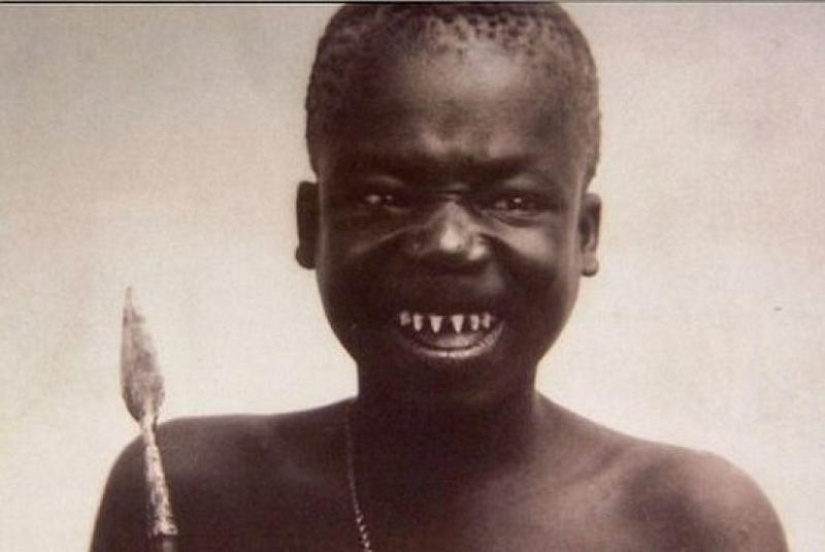
One of the periods of human development is rightly called the "dark Middle Ages" because of the prejudices and savagery that prevailed at that time. It turned out that some manifestations of this savagery "safely" migrated to the XIX and XX centuries. One example is the dramatic story of a Congolese pygmy from the Mbuti – Ota Benga people, whose name translates as "friend".
The book" The Origin of Man " by Charles Robert Darwin made a real stir in the scientific community. Evolutionary scientists began actively searching for possible remains of apes. However, some of their would-be colleagues firmly believed that there were also living representatives of the intermediate stage of the ape's development into a human. The beginning of the twentieth century was marked by a new outbreak of enthusiasm in the search for living representatives of the transitional form, which sometimes reached the point of absurdity.
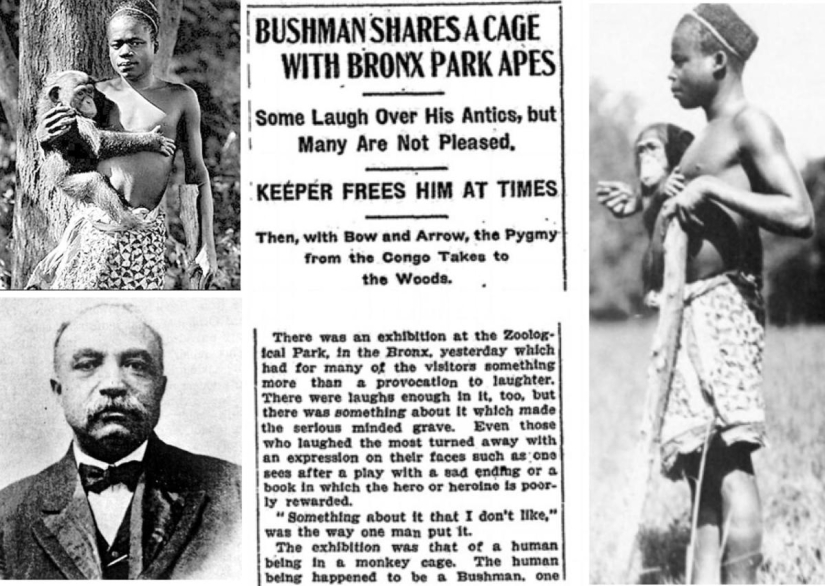
Pygmies
Some sources claim that Benga was freed from the captivity of the slave traders of the Congo by the missionary Samuel Phillips Werner, who bought him for a pound of salt and a piece of cloth. According to other sources, the unfortunate pygmy was forcibly captured by the same "evolutionary explorer" in 1904.
Ota Benga, a 23 – year-old pygmy, was a married man with two children-seemingly just like ordinary people. One day he went hunting, and when he returned, he found that his entire tribe, including his family, had been killed by Belgian soldiers.
The missionary Werner refused to consider pygmies as full-fledged representatives of the human race and was very happy to meet a tribe of" monkeys "who had not yet" passed " the stage of evolution on the way to modern man.
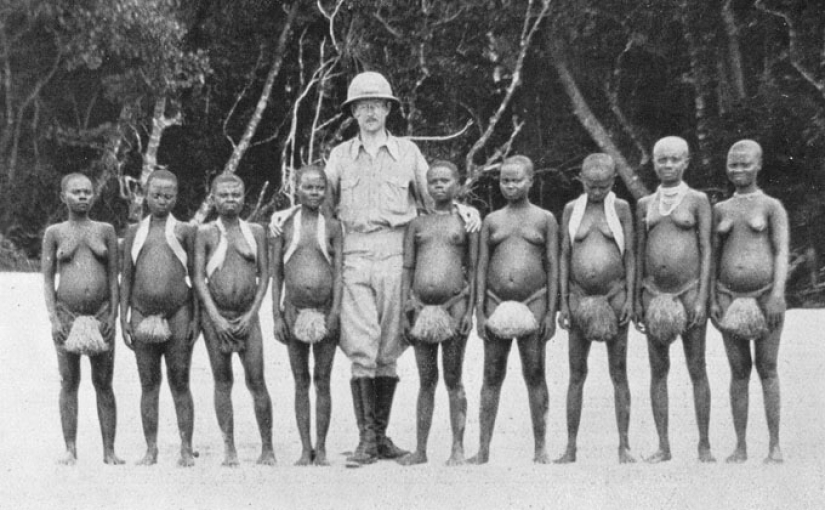
Ota Benga (second from left) with his tribesmen
Little Beng, who was 140 cm tall and weighed 46 kg, was chained up and put in a cage. In fact, he became a slave, despite the fact that it was the twentieth century. It was sent to the American city of St. Louis, Missouri, for the World's Fair, where it became part of the anthropological exposition as a" living exhibit " along with various species of monkeys. They tried to present it as a "transitional evolutionary form", the closest to modern humans.
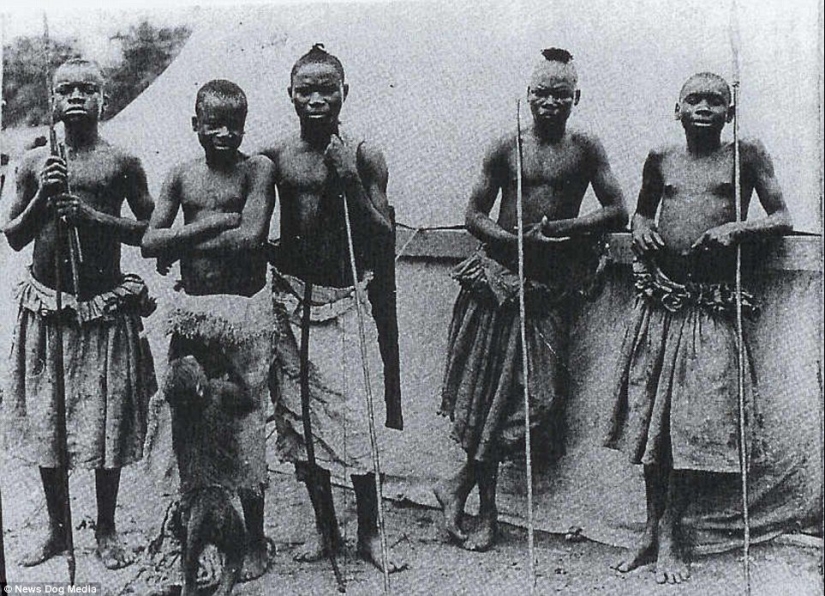
St. Louis World's Fair 1904
In 1906, in the Bronx, New York, he had to perform in the exposition of the "human zoo". Chimpanzees, gorillas, and orangutans were all in the real monkey house with him. Against their background, he was presented as a living example of an ancient ancestor of man. Thousands of people came to the performance in the hope of seeing an outlandish "animal", and others treated him like an animal.
The racist media, which firmly believed in the undisputed superiority of white people, was happy to publish reports about Ota Beng-the discovered missing link in the form of a half-ape, half-man.
The head of the zoological park, the evolutionist William Hornady, in his" fiery "speeches, argued that it was a great honor for his institution to have such a specimen at its disposal, representing the "transitional form" from ape to man.
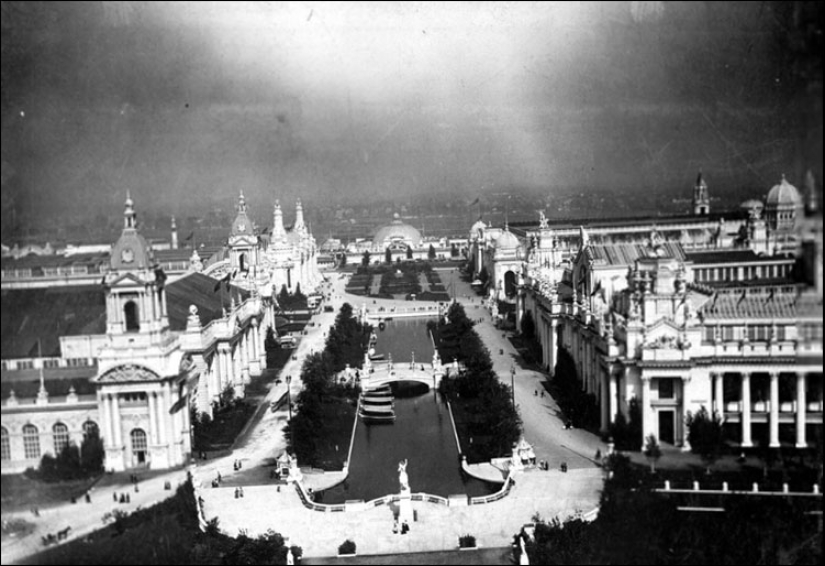
Due to the fact that Ota had sharpened teeth, he was presented to the public as an ogre
This practice was common in those years. Zookeepers often showed examples of "non-Western" people as an example of the" early stage " of human evolution. But this time, for the first time, a person was put in a cage in an American zoo. It was a real medieval barbarism.
At first, the naive, good-natured and cheerful Beng was allowed to walk around the park, help take care of the animals, but most of the time he was in the monkey house. He was even given a bow and arrow to attract new crowds of onlookers and earn even more money from the exhibition.
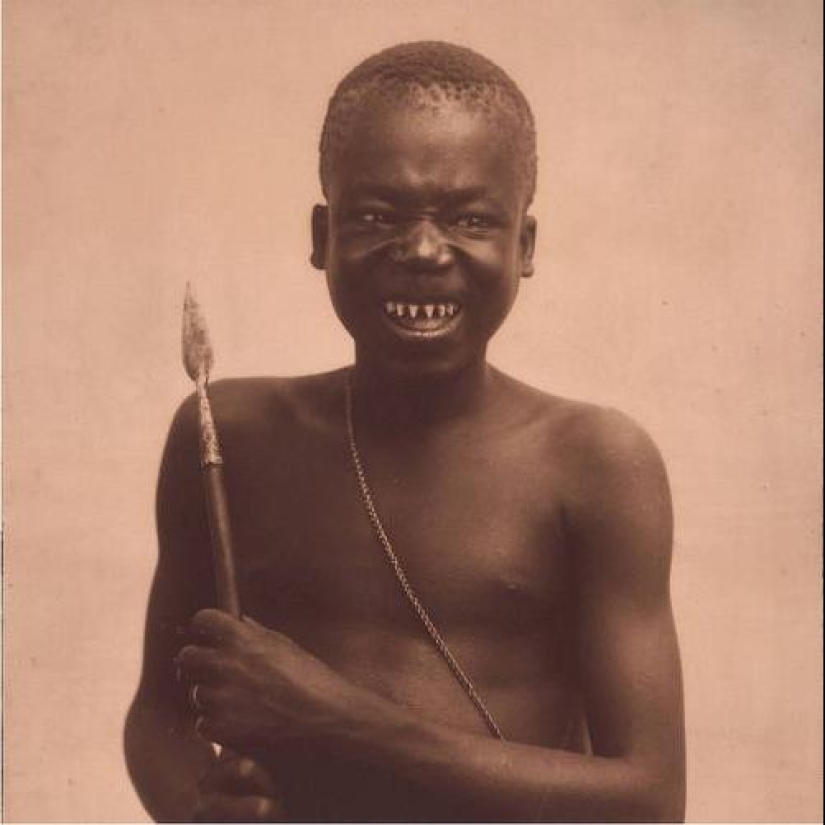
Ota Benga at the Bronx Zoo in 1906
The African-Americans decided to help the poor pygmy, who was much written about in the newspapers of those years. Pastor MacArthur, a representative of the church for Blacks, managed to secure the release of Ota Beng, and the head of the Howard Orphanage, James M. Gordon, took the pygmy under his care.
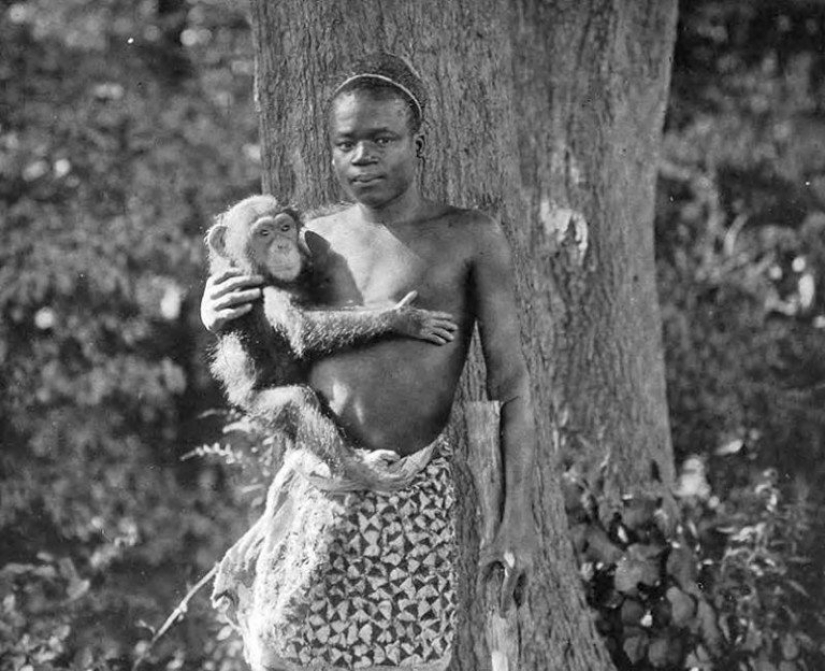
Ota Benga began to wear American clothes and learned English quite successfully. Over time, he was hired for a normal job. But the most cherished dream of the "missing link of evolution" remained home. Unfortunately, the dream of Ota Beng was not destined to come true – the beginning of the First World War led to a significant reduction in passenger flights across the Atlantic, which made it impossible for him to return to Africa. And after finding out how much a ticket to Africa costs, Ota came to the conclusion that he would never earn it.
As the long months passed, the depression turned into a deep depression, followed by a nervous breakdown. As a result, in 1916, Ota Benga, who by that time was 32 years old, committed suicide, because the thought of not being able to return home was unbearable to him. So ended the sad story of a cheerful man.
Keywords: Zoo | Africa | History | Peoples | Racism | Pygmies | Fate
Post News ArticleRecent articles

Tatiana Gavrilova, better known by her creative pseudonym TanikoGa— is a Russian artist from Shlisselburg who loves cats and ...

Frida Kahlo advertising Mexico City, and Leonardo da Vinci — Florence? Let's fantasize about what advertising posters of ...
Related articles

This series of photos perfectly illustrates how alcohol turns a respectable person into a staggering wreck, spewing a bad smell, ...

The STS TV channel started broadcasting on 1 December 1996. At the time, he was really entertaining, cozy translating foreign ...

In the Italian town Venzone in the province of Udine people have long lived side by side with the mummies. Drank tea with them, had ...

Ready to let out your wildest fantasies? View that creates American digital artist Konzhe Marcus (Marcus Conge), which connects the ...